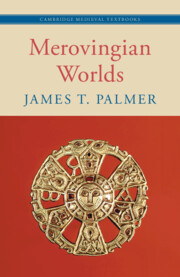Book contents
- Merovingian Worlds
- Cambridge Medieval Textbooks
- Merovingian Worlds
- Copyright page
- Contents
- Figures
- Maps
- Preface and Acknowledgements
- Note on Digitised Manuscripts
- Abbreviations
- Introduction
- 1 History and Its Historians
- 2 Identities and Status
- 3 Power in the Early Merovingian World (c. 450–613)
- 4 The Rise of the Shadow Kings (613–751)
- 5 Economies, People, and Nature
- 6 Literacy and Culture
- 7 The Frankish Churches
- 8 Religions and the Wider World
- Epilogue
- Bibliography
- Index
2 - Identities and Status
Published online by Cambridge University Press: 22 November 2024
- Merovingian Worlds
- Cambridge Medieval Textbooks
- Merovingian Worlds
- Copyright page
- Contents
- Figures
- Maps
- Preface and Acknowledgements
- Note on Digitised Manuscripts
- Abbreviations
- Introduction
- 1 History and Its Historians
- 2 Identities and Status
- 3 Power in the Early Merovingian World (c. 450–613)
- 4 The Rise of the Shadow Kings (613–751)
- 5 Economies, People, and Nature
- 6 Literacy and Culture
- 7 The Frankish Churches
- 8 Religions and the Wider World
- Epilogue
- Bibliography
- Index
Summary
This chapter explores how identities were forged and developed under the Merovingians, from the creative fiction of ‘Frankishness’ to more personal identities defined by gender and social status. It examines how identities can appear different through stories, laws, dress, and language, highlighting the importance of how people defined and presented themselves according to need and circumstance. It takes seriously the contention that identity formation fed into discourses of power because they structured hierarchies and issues of inclusion and exclusion.
- Type
- Chapter
- Information
- Merovingian Worlds , pp. 63 - 88Publisher: Cambridge University PressPrint publication year: 2024

